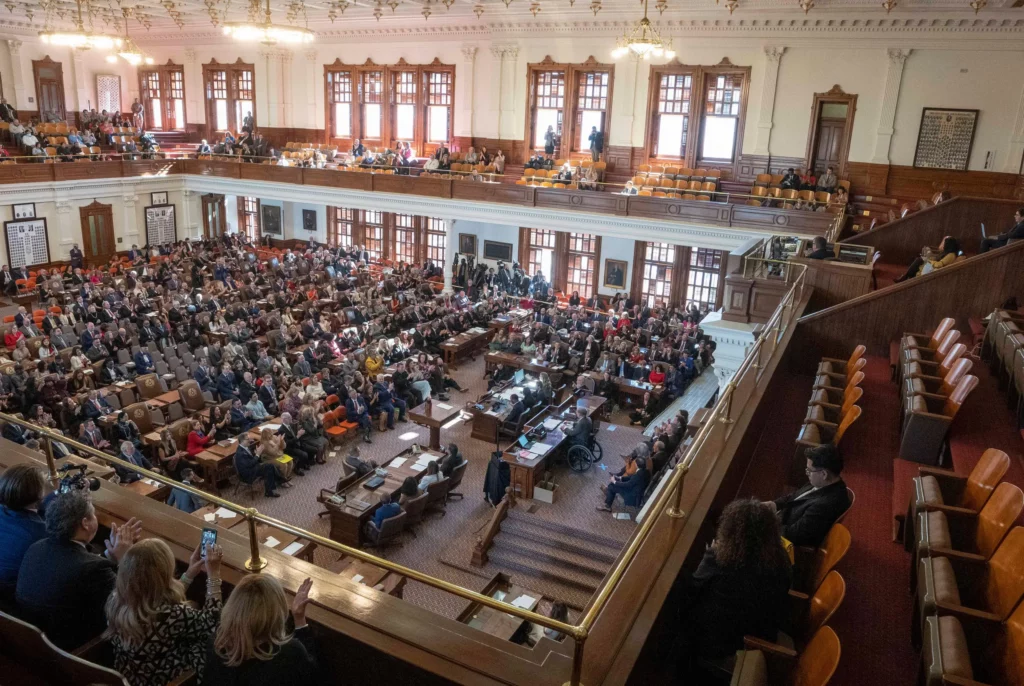New Technologies to Aid in the Reporting of Domestic Violence
In a world growing more dependent on technology, the Juvenile Justice and Family Issues Committee of the Texas House of Representatives discussed legislation on Friday, Sept. 23rd that will allow for technological aid in the reporting of domestic violence in order to better benefit abuse survivors.
During the height of the COVID-19 pandemic, virtual service provision skyrocketed with 51% of legal services provided virtually, according to the Texas Council on Family Violence. Legislators and witnesses from around the state said they hope that with more technological options available for survivors, there will be less risk of violence or trauma as well as more convenient and cost-effective options when reporting their abusers.

“Just standing up in front of a judge is intimidating for everyone,” said Krista Del Gallo, legislative director for the Texas Council on Family Violence. “But one of the very real responses to trauma is that some people shut down. At the moment when you’re really required to be as clear and accurate and articulate and as compelling as possible if that’s the same moment that you’re right next to your abuser and right in front of a judge in a court of law, that’s going to be really hard for a trauma victim.”
Benefits of Virtual Protective Order Hearings
A protective order is a legal document that can protect against family violence, sexual assault, stalking, harassment, and/or threats, according to the El Paso County Attorney’s Office. Anyone who has experienced abuse can apply for a protective order. Service organizations like the El Paso County Attorney’s Office and others located throughout Texas can assist in the filing of these cases.
The committee discussed the benefits of performing these protective order hearings remotely over video platforms such as Zoom. In fact, the El Paso County Attorney’s Office found a 54% decrease in the dismissal of protective order cases when using remote testimony. Del Gallo emphasized that when survivors feel they have better control over their environment and safety, they can more comfortably deliver the information required.
Furthermore, Del Gallo made the point that remote hearings are a convenient, more efficient process that allows participants to avoid spending time on transportation, taking off work, or finding childcare.
“The convenience that a virtual hearing allows for is extraordinarily helpful for anyone, but particularly for victims of domestic violence, because if you’re applying for a protective order, you’re probably taking other steps that are going to be important in terms of your safety,” Del Gallo said.
This leads to cost-effective benefits as well. Carlos Salinas, a family lawyer at Thompson Salinas Londergan, works with hourly paid workers who lose money when forced to step away from their duties and travel to courthouses on top of transportation costs, parking fees, etc.
“People who have in the past flown in from out of state for the purpose of testifying as opposed to just logging onto Zoom, all of those costs really affect the people that I serve,” Salinas said.
In addition to Zoom hearings, other technologies being implemented include discrete online questionnaires, open anytime, that domestic violence service organizations can use to assess an individual’s protective order case and determine their eligibility for legal representation. Moreover, most domestic violence service organizations provide hotlines or live chats that act as more urgent forms of communication. In fact, the National Domestic Violence Hotline received a total of 620,193 calls, chats, and texts in 2021.
While the committee mostly discussed benefits associated with these hearings, Whitney Thomas, executive director of the Family Abuse Center, brought up economic disparity concerns that could affect lower-income victims in rural Central Texas who don’t have access to cell phones or the internet.
“A majority of people who are in poverty do not have financial resources in order to obtain legal help or paid resources,” said Thomas. “But it’s also easier and more comforting for a victim to testify or talk about their situation via Zoom in a courtroom setting because they aren’t being directly stared down by the offender whom they can see.”
What’s Next?
The next steps the committee will take is to draft legislation that will hopefully get approved by both the House and the Senate. Rep. Victoria Neave, the chairman of the committee, said they expect little pushback for this legislature.
“We want to continue to shine a spotlight on this issue, just as we do with sexual violence, stalking, sexual harassment, things like that,” said Neave. “We have to just continue to push all the way to make sure it gets across the finish line.”
If you or anyone you know may be suffering from domestic violence, please contact the National Domestic Violence Hotline or call 911.









